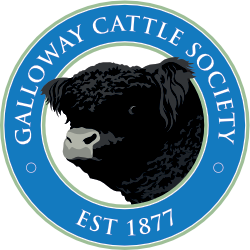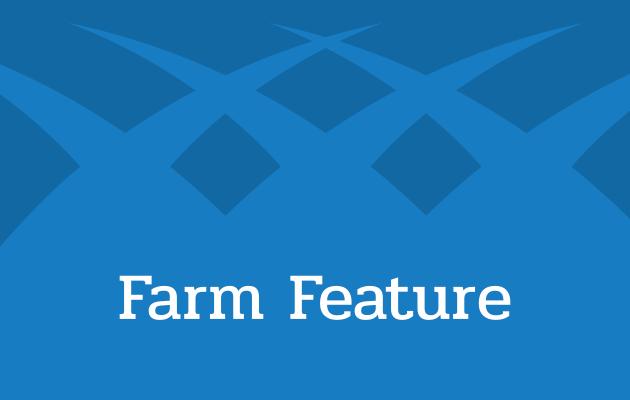Galloway cattle play a key role in the management of a vast upland estate in west Northumberland.
The remote Emblehope and Burngrange Estate runs over 7,550 acres of environmentally important land, including SSSI, completely surrounded by Kielder Forest and 13 miles to the north west of the village of Bellingham.
Emblehope and Burngrange was bought in March 2016 by the Kennel Club to establish a centre of excellence for gun dog trials and gun dog training and work has been ongoing to create an infrastructure to support competition and training days with pheasant and partridge.
The estate comprises very open, undulating, wet and peaty hill land - and it is a harsh environment. Much of the estate’s lower ground is white Molinia grassland, with heather further out and the land rises to around 1,600ft at the top of Monkside, on the Burngrange hirsel.
The land is currently managed within a Higher Level Stewardship scheme although discussions are ongoing with Natural England regarding a potential transition to the proposed new Environmental Land Management Scheme, although further details are required. The farm is under the management of John Waugh.
Hill ground currently supports 1,500 sheep in nine separate hefts over two hirsels. Sheep are mostly Lanark Type Scottish Blackface while the Low Rig heft on Burngrange carries just over 100 South Country Cheviots. All are bred pure.
A herd of cattle was introduced to the farm in 2010 under the previous ownership of the Northumberland Estates to help manage the coarse grassland.
A herd of 20 Galloways was set up, comprising pedigree heifers sourced from Barfil, Hindhope and Haining House, among others, under the management of John’s predecessor, Ian Savage, who now farms at Brieredge, Bellingham.
Ian has given John invaluable help and advice, in particular with handling stock on the hill for gathering and shepherding, and he still helps whenever he can.
Brought up at Craigdarroch Farm, Sanquhar, where his grandfather, father and uncle were shepherds for the late David Ker for many years, John Waugh took over as manager in March 2012, calving the herd for the second time which was put to the Whitebred Shorthorn bull to produce Blue Grey calves.
John said: “Between myself, the agents for Northumberland Estates, and Natural England representatives we identified a need for more cattle on the farm, and agreed to double the numbers.
“Over a couple of years, in calf and bulling heifers were sourced from the pedigree herds of Fingland, Troloss, Ben Lomond and Bowanhill. I opted to split the herd in two, to graze separate parts of the farm, and breed one half pure with a view to keeping our own replacements.”
Galloway stock bulls used to date have been Kirkstead Umpire, Huntly Aviator and Barlaes Pioneer.
Calves are born from early March to May outside on the lower enclosed ground. The cows are out on the hill all year until they come in for calving or other procedures. They are weaned in November and the calves are wintered in a shed at Wall Fell farm near Hexham, looked after by Richard Keen.
Galloway and Blue Grey bullocks are sold store at the Kirkcambeck sale at Longtown in October, at 17-20months old. Blue Grey heifers are sold at Newcastleton in October at a similar age.
“Since breeding my own replacements, I’ve opted to register the Galloway heifer calves under the Emblehope prefix, and I have begun a policy of selling on surplus bulling heifers at the Galloway society’s spring sale at Carlisle in March.
“This year I took three to Carlisle after selecting four to keep at home as replacements and they sold to a top of 880gns and averaged £823. I hope to build and improve on this trade if I can,” said John.
The herd has been closed to new females since 2015 when progeny of the first stock bull Kirkstead Umpire were born.
“With the transition into a new environmental scheme and the need to support the Kennel Club’s newly established game enterprise we are in the process of trimming cattle numbers to a suitable level. It’s a balancing act to complement the needs of the environmental scheme and the Kennel Club’s enterprise.
“The plan is to have 30 head of breeding cows and heifers, all going to the Galloway bull.
“By breeding all the cattle pure, there is a huge value here in being self sufficient with replacements. Situated in the middle of the Kielder forest, we have no livestock neighbours, so no health risks. The herd is BVD negative through having the calves tagged with tissue test tags after birth, and we are now Johnes Level 1 risk, through the Premium Cattle Health Scheme which we have been a member of for the last three years. Heifers are also vet checked to assess their breeding suitability.”
The Whitebred Shorthorn bull has been used for the last time this year and next year’s Blue Grey calves will be the last to be sold.
“The set-up is a traditional hill farm and the less complicated the better. The sheep flocks are self replenishing and now the cattle will be too.
“I will miss selling the Blue Grey calves. The females turn into fantastic long lasting cows which can be bulled by breed to produce a good calf. It’s a great experience being part of the iconic annual Blue Grey heifer sale at Newcastleton mart. However I reckon that going forward, having a slightly smaller, easier managed self contained herd will be beneficial to the place,” said John.
With the majority of the Galloway cows being productive until they are 12 or 13 years old, despite the harsh environment with only a three month grass growing season, only a handful of herd replacements will be required each years. Surplus two year old bulling heifers will be for sale each year at the Carlisle March sale.
“The cattle are cheap to keep - they are fed a limited amount of hay on the fell, depending on the weather and a few cattle cobs, mainly as a management tool. They also get an annual injection against fluke,” said John.
“Galloways are the perfect cow for the farm with being a lighter weight cow they don’t poach the ground and their dung provides an environment for insects which the game birds feed on.”
John aims to keep the cattle calm and easily handled and he can lead the herd off the hill and up the road to the handling pens by shaking a bag at them with the cows trundling behind him.
“Apart from occasional help, with running the farm as a mainly one man operation it is hugely important that I can move closely amongst the cows either on the hill or in the pens. Although it is of course desirable that cattle have a strong mothering instinct, it is important too that they are calm at calving time,” said John.
A small amount of hay for feeding tups and cattle on the hill during harsh weather and straw for housed stock is bought in.
Scottish Blackface tups are bought from most of the main BF sales from the likes of Burncastle, Dunruchan, Balrazzie, Kirkmabreck and Craigdarroch.
Occasional private purchases from Lauderhill, Kingside and Holylee have also been highly beneficial to the flock. Breeding is for milky, motherly females with good skins.
Stock hoggs are wintered at Camieston farm, St. Boswell’s under the care of Roy Marshall.
Store lambs are all sold store at Longtown and they are off the farm by early November at the latest when the calves go to Hexham. Cast ewes are also sold through Longtown.



